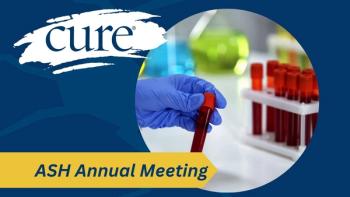
Initiating Therapy in CLL
Transcript:
Nicole Lamanna, MD: Traditional therapy for chronic lymphocytic leukemia was chemotherapy that was given in the veins, so intravenous (IV) chemotherapy. It usually consisted of more than 1 drug. We still use a lot of that therapy. However, we’ve shifted away from some of the chemotherapy regimens because they tend to be more toxic and there’s more side effects. Now we’ve moved into ibrutinib, which is called a BTK (Bruton’s tyrosine kinase) inhibitor. It’s a novel targeted therapy. It’s oral, so it’s a pill. This really has changed the way we treat patients. But it’s a different strategy.
In the era of old chemoimmunotherapy, you got a course of therapy. If you had bulky lymph nodes or your blood counts were poor and you started IV chemotherapy, you would get treatment in what is called cycles. You would get a treatment approximately once a month, depending upon the regimen. It would last 6 months, and you’d be done. It would shrink your lymph nodes and improve your blood counts. You might get a complete remission to the treatment, depending on your treatment. That complete remission means that there was no evidence of the leukemia after you were done with treatment. It doesn’t mean you were cured, it just means that we couldn’t find any CLL. Or you might have gotten a partial response. The blood counts got better, the lymph node shrank, but there’s still some leukemia there. Then you were observed until the disease acted up again where you needed treatment. So, again, poor blood counts or bulky lymph nodes.
Ibrutinib is different. When ibrutinib got approved as an oral therapy, essentially you would take medication once a day. The treatment shared the same goal: to improve your blood counts and to shrink your lymph nodes. But patients have stayed on therapy. So, this is a slightly different strategy. Right now, the way this drug is being used is that you stay on therapy chronically. So, if you’re on a blood pressure medicine, or on medicine for heart disease, you would take it chronically, once a day, as long as your disease was responding or unless you had a side effect to the drug. If there was a problem and you were having a side effect, we’d stop the drug. Or if your disease was no longer responsive to the therapy, of course you would change therapy.
There’s 2 different strategies. You still have some chemotherapy, which is given for a shortened duration of about 6 months. Then you have ibrutinib, which is indefinite right now. We’re working on that. So, people take it chronically, once a day.
What we’re trying to define right now is, can we figure out a way that people don’t necessarily have to be on these oral agents indefinitely? There are a lot of clinical trials that are running that are looking at combination strategies with ibrutinib to see if we can enhance response a little quicker. Perhaps, to get to complete remissions quicker. And then, to see if we can give time-limited durations of therapy. In other words, you would just be on ibrutinib for a period of time. If there’s no disease, you can stop therapy. If the disease comes back again, you should restart therapy. So, these are all in development. This is all in the context of clinical trials that we’re running now.
People also ask, “Well what’s better to start? Should I start with chemoimmunotherapy or should I start with the pill first because it’s approved for everybody?” There are some clinical trials that are actually looking at patients that were randomized to get FCR (fludarabine, cyclophosphamide, rituximab), for example, versus ibrutinib. We will see if one is better to start over another. I think that there’s data emerging that says, depending upon the features of somebody’s disease, if you have a 17p deletion, you should get ibrutinib. You shouldn’t get FCR. You shouldn’t get chemoimmunotherapy.
But for other subsets, we’re learning about different markers and features of disease where we may say that going to a novel approach is better than using traditional chemoimmunotherapy. And this has to do with some of the other testing that we run on patients routinely. It’s called the IgVH (immunoglobulin variable region heavy chain) test. For patients who are unmutated—which is less favorable over patients who have a mutated IgVH–a lot of us will steer them to a novel combination such as with ibrutinib or others, versus chemoimmunotherapy, because the response duration may not last as long.
I think there will be emerging data about that. That’s not routine clinical practice, but I think that it’s an important feature. So, that’s an important part of the testing that all patients should have, as well, before initiating any therapy. So, FISH and their IgVH status is very important.
In terms of other therapies, there’s a lot of different choices for patients with CLL. Part of that also depends on somebody’s other medical problems. If you don’t have a 17p deletion and you’re more favorable but still need treatment, do you choose chemoimmunotherapy or ibrutinib? Part of that has to do with comorbidities. What other medical problems does the patient have? What other medicines are they on? Do they have risk for bleeding complications?
So, you take side effects of treatment regimens into account. You have that discussion with patients. There are some patients in whom I absolutely steer toward a certain treatment because I think it’s better for their disease, certainly, if they can tolerate it. But for others, if they’re less clear, then it’s about patient preference and expectations of therapy. What are you trying to achieve? What side effects from the therapy may they have? You have to have that open dialogue with your patient and make a decision.
Transcript Edited for Clarity




